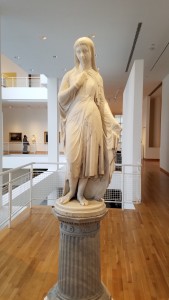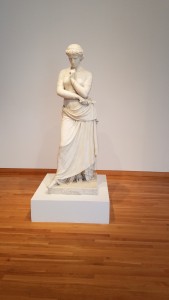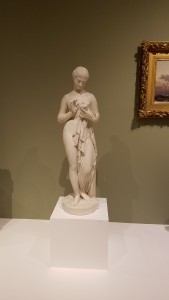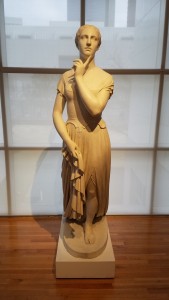All summer, I kept meaning to post something–I was somewhat lazy, but a few things happened, so here is an update.
I’ve started and finished two pieces since May. My new work for Galo Arboledo is On a Clear Night You Can See Forever for violin and piano, and is an ode to the Shafran Planetarium at the Cleveland Museum of Natural History. We are hoping to premiere the piece in the Museum on a Cleveland Composers Guild concert on November 26, but we’re still awaiting the decision of the program committee on that. The piece is a fantasy that explores the wonders of the Universe, starting close to home with the aurora, and zooming out to the ultimate panorama. More updates on this piece in the near future!
I’m also ready to send copies of my first big band piece to Ed Michaels, who will premiere it with Lakeland Jazz Impact this year. Appropriately, the title is Maximum Impact. I’m always pleased when my work can intersect with my job in some way. Jazz Impact has a storied history, and is the only high school honors jazz band in Northeast Ohio.
A big first for me was conducting the Resonanz production of Ravel’s L’Enfant et les sortileges. I can now call myself an opera conductor. Even just conducting a piano-vocal arrangement was an amazing challenge, and while I felt some trepidation, I’m glad that I took it on. I’m also pleased to be working with a group that is bringing serious music to Lake County, where, outside the schools, there isn’t enough.
The Lakeland Civic Orchestra will start up on Monday. I’m excited to see our group again, and it looks like a good season ahead. We are starting our season with a concert on November 5 that includes Massenet’s Ballet Music from Le Cid, Beethoven’s Triple Concerto, and Alice Mary Smith’s The Masque of Pandora. It is always hard to choose music for the orchestra–nothing too easy, nothing too hard, and always the knowledge that whatever I pick we have to live with for a few months while we prepare it. Sam Rotburg, violin faculty at Baldwin Wallace University, approached me with the idea of the Beethoven Triple a couple of years ago, and that is now coming to fruition. His wife and colleague Sungyeun Kim will play piano, and Chauncey Arecet will play cello. The Massenet is a piece I first encountered in college in a band transcription, and when I was playing the CD in the car recently, Noah reminded me that he had heard it in a cartoon, as well. The odd duck, then, is the Smith. A composer who deserves to be better known, certainly. I resolved this season to begin to make more of an effort to include music by under-represented voices in our concerts, after I realized that Jennifer Jolley’s Ferry Crossing was the first piece by a female composer that we had played in the five years that I have conducted the group. The challenge, then, is that we are not a new music ensemble, so I need to educate myself and find repertoire by female composers and composers of color of the past. Hence, Alice Mary Smith. Since her style is close to Mendelssohn, she will fit nicely into what we do, and I’m excited to give the local premiere of this piece. If the Cleveland Orchestra won’t do any better than it has in programming diversely, the Lakeland Civic Orchestra can lead the way.
We had a wonderful trip in June to Dearborn, Michigan to see the Henry Ford Museum and Greenfield Village. It was great family time, as we stayed at “the pink hotel” and absorbed some of the history of our nation. The Henry Ford is really a Smithsonian West in many ways, and Noah was especially excited about seeing the chair Abraham Lincoln was sitting in when he was assassinated. I’m moved that my kids were able to sit in the same bus that Rosa Parks was arrested in, and a little stunned that the exhibit on consumer technology now includes things I had in my house as a high schooler. We also lived more history at Hale Farm and Village here in Cleveland, when we attended their Civil War reenactment earlier this month. Noah has developed in interest in this, and he was fascinated by it, of course. My first orchestra conducting gig was conducting artillery reenactors for the 1812 Overture, but I had never been to an encampment like this. The tough part of it all, is trying to explain why people do this–not only to my son, but also to my sister-in-law Connie and her two nieces, who were visiting from Germany.
I also took Becky to see Billy Joel perform at Progressive Field in July. I’m glad we went, but the musician in me found it too loud. I can’t imagine a concert by a group meant to be loud. He only sings hits now, of course, since he hasn’t had a new album in 15 years. He threw in a couple of deep cuts, but mostly, everyone got to hear what they came to hear. One of my favorite sights of the evening was a man wearing a Fantasies and Delusions t-shirt. That is a true Billy Joel fan, and having had my music on the same program as some of those pieces (thanks, Avguste Antonov), it’s fun to know that I’m artistically connected to such a big name. I’ve always loved his music, even before I realized it was his music, and I’m glad I had a chance to see him while he is still performing. Not bad for my first stadium concert.
Now fall semester looms. Noah is back in school, everyone who has visited has visited, and it’s time to open the folder called Compositions Fall 2017. Ahead of me are a trio for piano, violin, and trumpet for Troika Melange; a piece for soprano and jazz trio for Carrie Hennessey; and possibly some songs for a connection from Resonanz. Dianna Anderson has agreed to premiere Sisters in Stone, but we haven’t figured out when; I would like to do it at the High Museum of Art, since the statues that inspired it come from there. I would like to get Twenty Views of the Trombone out there as well. I hope to present it at Lakeland and in some other college venues this year. I’m also hoping to return to the CMS circuit, since their Great Lakes Regional conference is in Columbus, and I wouldn’t have to spend my entire travel budget on one trip. I had a great opportunity to reconnect with Nancy Joy, who commissioned South Africa, my horn and marimba piece which is just about my greatest hit. She is planning to record the work sometime this year, which will be another boost for that surprise success.
Where did the summer go?



